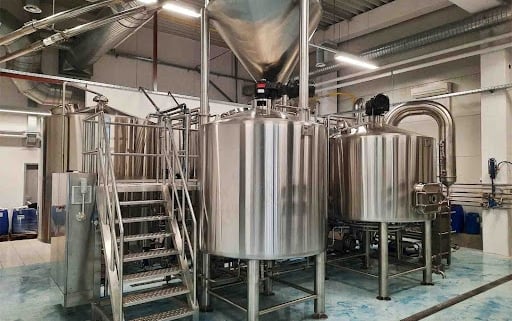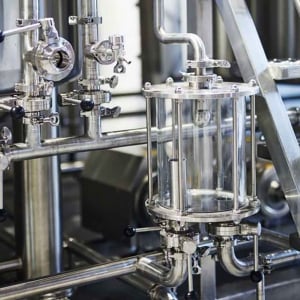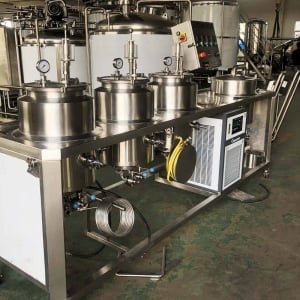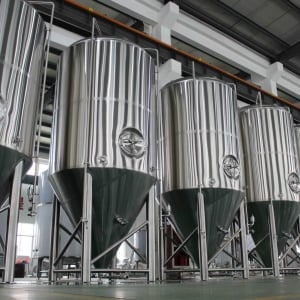Craft Beer Brewing Equipment
Overview of Craft Beer Brewing Equipment
Craft beer has taken the world by storm, with passionate brewers and beer lovers craving unique, flavorful, and expertly crafted beverages. Whether you’re a home brewer looking to scale up or a new brewery startup, understanding the essential craft beer brewing equipment is key to brewing high-quality beer consistently. But where do you begin when it comes to investing in the right equipment? This guide will walk you through everything you need to know about brewing equipment, from the basics to advanced setups, helping you navigate the choices, pricing, installation, and maintenance. Let’s dive into the exciting world of beer brewing.
What Makes Craft Beer Brewing Special?
Craft beer brewing is a mix of science, art, and patience. It allows brewers to experiment with different hops, malts, and fermentation methods, producing flavors ranging from citrusy and floral to malty and bitter. The secret to achieving that perfect craft beer lies in using the right brewing equipment. This equipment helps control essential elements like temperature, pressure, and fermentation time.
Why Is the Right Brewing Equipment So Important?
Quality equipment ensures you have precise control over each step of the brewing process. It not only impacts the flavor and quality of your beer but also streamlines operations, reduces waste, and helps with scaling production. Now, let’s take a closer look at what equipment is essential for brewing craft beer and how to choose the best setup for your needs.

Craft Beer Brewing Equipment Guide
Whether you’re just starting out or you’re scaling up to commercial production, there’s a list of essential equipment that forms the backbone of every brewery. Each piece of equipment plays a specific role, and having a clear understanding of these roles is the first step toward becoming a master brewer.
Key Craft Beer Brewing Equipment Components
- Malt Mill: Used for crushing malted barley and other grains to the desired consistency for mashing. The grind size affects the sugar extraction process during mashing.
- Mash Tun: A vessel where milled grains are mixed with hot water, converting starches into fermentable sugars. The mash tun often has a false bottom to separate the liquid from the grain husks.
- Lauter Tun: Used for separating the mash (grains) from the wort (liquid). In smaller setups, the mash and lauter tun are sometimes combined into one unit.
- Boil Kettle: Once the wort is separated, it’s transferred to the boil kettle, where it’s boiled and hops are added to infuse flavor and bitterness.
- Fermentation Vessel (Fermenter): This is where yeast is added to the cooled wort, allowing the fermentation process to turn sugars into alcohol. Temperature control is critical during this phase.
- Conditioning Tank: Used for aging and carbonating beer after fermentation. This step refines the flavor and removes unwanted compounds.
- Bright Tank: After conditioning, the beer is transferred to a bright tank for further clarification and carbonation before it is packaged.
- Heat Exchanger: Essential for rapidly cooling the wort after boiling, preventing contamination and off-flavors. It typically uses cold water to absorb heat from the hot wort.
- Cleaning and Sanitizing Equipment: Cleanliness is crucial in brewing. Equipment such as pumps, CIP (clean-in-place) systems, and chemicals like caustic soda and sanitizers are essential to maintaining hygiene.
Let’s break down the types of brewing equipment available based on their function and how they interact with each other in the brewing process.
Types of Craft Beer Brewing Equipment
| Equipment Type | Description | Key Features | Purpose |
|---|---|---|---|
| Malt Mill | Crushes malted grains for brewing | Adjustable grinding size, manual or electric | Prepares grains for the mash tun |
| Mash Tun | Vessel for mixing grains and water to convert starch to sugar | False bottom, insulated for heat retention | Converts starches into fermentable sugars |
| Lauter Tun | Separates wort from the grain husks | False bottom, built-in sparging system | Filters out grain husks after mashing |
| Boil Kettle | Large vessel where wort is boiled, and hops are added | Temperature control, stainless steel | Boiling and hop addition |
| Fermenter | Tank where wort ferments into beer | Temperature control, pressure regulation | Converts sugars into alcohol via yeast |
| Conditioning Tank | Holds beer for maturation and carbonation | Insulated, adjustable pressure, stainless steel | Refines flavor and carbonates beer |
| Bright Tank | Used to clarify and carbonate beer before packaging | Carbonation stones, temperature control | Clarifies beer, final carbonation step |
| Heat Exchanger | Cools wort rapidly to prevent contamination | Plate or tube design, rapid cooling | Rapidly cools wort from boil to fermentation temp |
| Cleaning Equipment | Includes pumps, sanitizers, and CIP systems | Automated or manual cleaning systems | Maintains cleanliness of brewing equipment |
Craft Beer Brewing Process Overview
Once you’ve gathered all the equipment, the brewing process itself is where the magic happens. Each step is a crucial part of turning raw ingredients into the delicious craft beer you want to brew. Here’s a step-by-step guide to the brewing process:
1. Milling
The first step in brewing is to mill your grains. The malt mill crushes the malted grains, exposing the starch inside. It’s important to achieve the right consistency here – too fine, and the grains may clog the mash tun; too coarse, and you’ll leave behind valuable sugars.
2. Mashing
In the mash tun, crushed grains are mixed with hot water to create a “mash.” During this phase, enzymes break down starches into fermentable sugars. Controlling temperature is crucial to extracting the maximum amount of sugars.
3. Lautering
After mashing, the liquid wort is separated from the grain husks in the lauter tun. The grain bed acts as a natural filter, and the wort is drawn off from underneath. Sparging (rinsing) with hot water helps extract even more sugars.
4. Boiling
The separated wort is then boiled in the boil kettle, which sterilizes the liquid and stops enzymatic activity. Hops are added during this stage to introduce bitterness and aroma. Boiling times and hop quantities greatly affect the final flavor of the beer.
5. Cooling
After the boil, the wort needs to be cooled quickly to avoid contamination. This is done using a heat exchanger, which rapidly reduces the temperature so yeast can be added in the next step.
6. Fermentation
Once the wort has cooled, it’s transferred to a fermenter, and yeast is added. The yeast consumes the sugars and produces alcohol and carbon dioxide. Fermentation can take anywhere from several days to weeks depending on the beer style.
7. Conditioning and Carbonation
After fermentation, the beer is transferred to a conditioning tank where it matures and any undesirable flavors are refined. At this stage, carbonation can be added if needed. The conditioning period can last from a few days to several months.
8. Packaging
Finally, the finished beer is transferred to a bright tank for final clarification before packaging in bottles, cans, or kegs. Carbonation is adjusted to the desired level, and the beer is ready for sale or consumption.
Capacity, Space, Design, and Customization in Craft Beer Brewing Equipment
When selecting brewing equipment, capacity, space, design, and customization are critical factors to consider. Each brewery is different, and equipment needs to match production goals and physical limitations.
| Factor | Description | Impact on Brewing Process |
|---|---|---|
| Capacity | Refers to the volume of beer the system can produce at one time. Systems range from 1-barrel setups for small breweries to 100-barrel systems for larger operations. | Affects production scale and the ability to meet demand |
| Space Requirements | The physical footprint of the equipment is important, especially for smaller breweries. Larger systems require more space and may need customized layouts. | Impacts brewery design and layout |
| Equipment Design | Different designs offer varying levels of automation and control. Some systems allow for precise temperature and pressure adjustments, while others are more manual. | Affects the level of control brewers have over the process |
| Customization Options | Many manufacturers offer customization, such as the ability to add extra fermenters, integrate CIP systems, or alter the equipment to fit the space or production needs. | Tailors the system to the specific needs of the brewery |
Craft Beer Brewing Equipment Suppliers and Price Range
When purchasing brewing equipment, it’s essential to weigh your options between various suppliers. Prices vary depending on capacity, materials, and added features. Here’s a look at some popular suppliers and the price ranges for their equipment.
| Supplier | Price Range | Specialty | Location |
|---|---|---|---|
| Ss Brewtech | $3,000 – $20,000 | Fermenters, kettles, small commercial setups | USA |
| Brewmation | $10,000 – $50,000+ | Customizable systems for brewpubs and small breweries | USA |
| Portland Kettle Works | $25,000 – $100,000+ | Larger brewery systems with high-quality components | USA |
| Deutsche Beverage | $50,000 – $250,000+ | Large commercial systems, custom design capabilities | USA |
| Systech Engineering | $30,000 – $200,000+ | Fully automated brewing systems | International |
Installation, Operation, and Maintenance of Craft Beer Brewing Equipment
Installing and operating brewing equipment isn’t just about placing tanks in a room. It requires strategic planning, expert installation, and regular maintenance to keep things running smoothly.
| Installation | Operation | Maintenance |
|---|---|---|
| Requires professional installation | Operators must be trained in temperature, pressure, and timing control. | Equipment must be cleaned after every batch. CIP systems help. |
| Utilities like water, gas, and electricity need to be factored in. | Monitoring fermentation and hop additions are crucial. | Routine checks on valves, pumps, and seals are required. |
How to Choose the Right Craft Beer Brewing Equipment Supplier
Choosing the right supplier can make or break your brewing setup. Here’s a breakdown of what to consider when selecting a supplier for your brewing equipment.
| Factor | Description |
|---|---|
| Equipment Quality | Look for suppliers with a reputation for producing durable, high-quality equipment. |
| Customization Options | Consider how customizable their systems are to fit your specific brewing needs. |
| After-Sales Support | Ensure the supplier offers good customer service and technical support for troubleshooting. |
| Installation Services | Check if they provide installation services, or if you need to hire a third party. |
| Price and Warranty | Compare prices and ensure there’s a good warranty covering repairs and parts. |
Advantages and Limitations of Craft Beer Brewing Equipment
Every brewing setup has its strengths and weaknesses. Let’s compare the advantages and limitations of craft beer brewing equipment based on different factors.
| Advantages | Limitations |
|---|---|
| Provides precise control over brewing parameters such as temperature and pressure. | High-quality equipment can be expensive, especially for smaller breweries. |
| Allows for consistent, repeatable brewing results, which is crucial for scaling production. | Larger systems require significant space and utility investments. |
| Customizable systems allow for flexibility in brewing techniques and recipes. | Maintenance and cleaning can be time-consuming, particularly for larger setups. |
| Many systems come with automation, reducing the need for constant manual intervention. | Learning to operate advanced equipment may require additional training for new brewers. |
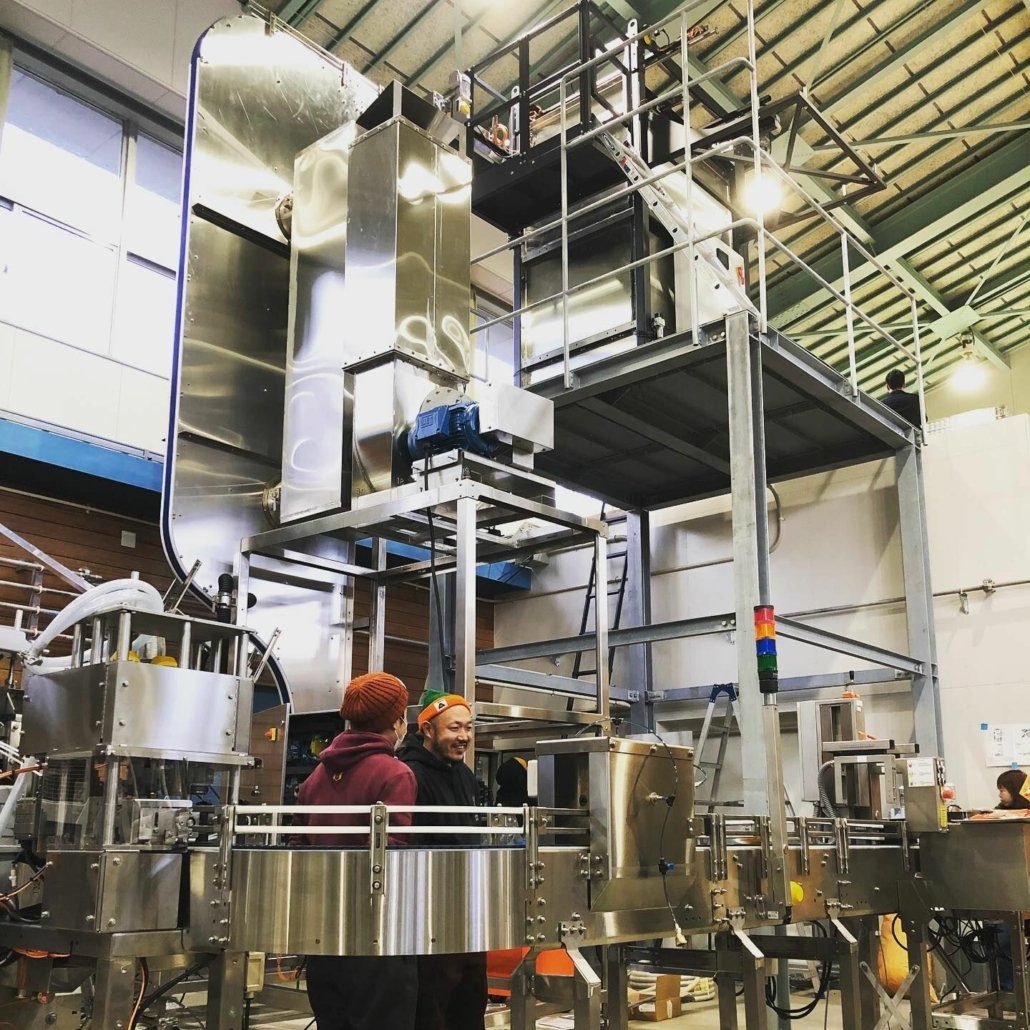
FAQ
| Question | Answer |
|---|---|
| What is the most important piece of brewing equipment? | Every piece plays a role, but many brewers consider the fermenter the heart of the process since fermentation determines much of the beer’s flavor. |
| How much space do I need for a small brewery setup? | It depends on capacity, but you should plan for at least 300-500 square feet for a 5-barrel system, with additional space for utilities and storage. |
| Can I upgrade my brewing system later? | Yes, many brewing systems are modular and can be expanded by adding more fermenters, a larger boil kettle, or upgrading automation features. |
| How often do I need to clean the equipment? | Brewing equipment should be cleaned after every batch to avoid contamination and ensure beer quality. Some systems come with CIP features to simplify this. |
| Is it possible to brew different beer styles with the same equipment? | Absolutely! The equipment is versatile enough to brew a wide range of beer styles. The key is adjusting the process for each style. |
Conclusion
Choosing the right craft beer brewing equipment can be a daunting task, but by understanding the roles of each component, assessing your needs, and carefully selecting suppliers, you’ll be well on your way to crafting exceptional beers. Whether you’re a small startup or scaling to a larger operation, having the right equipment will set the foundation for your brewing success.

